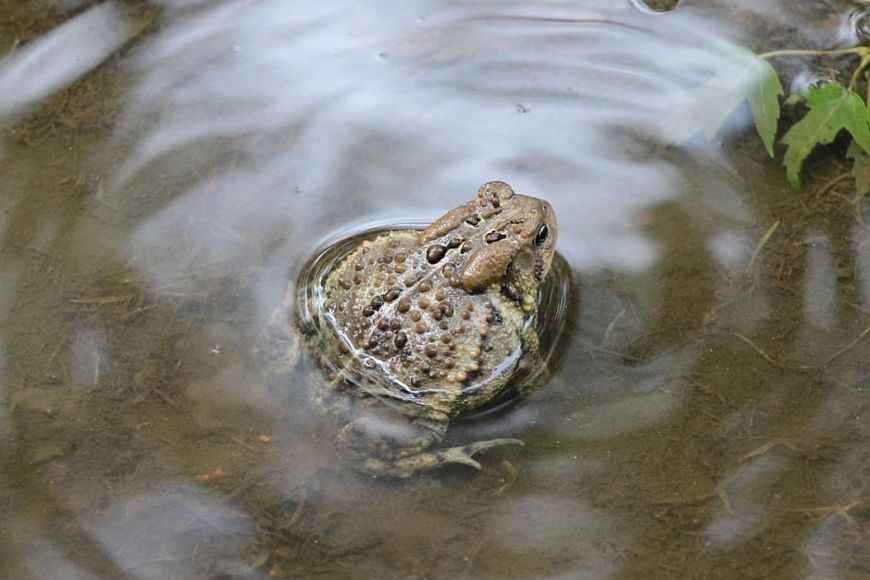Contact: Andrew Badje, DNR Natural Heritage Conservation Biologist
Andrew.Badje@wisconsin.gov or 715-921-5886
DNR Asks Public For Help With Frog And Toad Calling Surveys
 The DNR's Wisconsin Frog and Toad Survey is the longest-running citizen science frog calling survey in North America.
Photo credit: Wisconsin DNR
The DNR's Wisconsin Frog and Toad Survey is the longest-running citizen science frog calling survey in North America.
Photo credit: Wisconsin DNR
MADISON, Wis. – The Wisconsin Department of Natural Resources (DNR) asks the public to participate in the annual Wisconsin Frog and Toad Survey to help document frog and toad breeding calls throughout the state this spring and summer.
The Wisconsin Frog and Toad Survey was formally launched in 1984 amid concerns about declining populations of several species of frogs. Since then, citizen scientists have helped DNR conservation biologists better define the distribution, status and population trends of all 12 frog and toad species in Wisconsin.
“The DNR is once again looking for night-loving volunteers, who we lovingly call ‘froggers,’ to lend their ears to monitor and help conserve frogs and toads in all corners of Wisconsin,” said Andrew Badje, the DNR conservation biologist who coordinates the DNR’s Wisconsin Frog and Toad Survey.
Volunteers can participate in three ways:
- Traditional Wisconsin Frog and Toad Survey – This option requires volunteers to drive along a pre-set route for three nights of survey effort, once each in early spring, late spring and early summer. Volunteers make 10 stops per night, listening for five minutes at each site, documenting the species heard calling and the relative abundance of each species. See available 2023 survey routes and learn how to volunteer for this survey.
- Mink Frog Survey – Mink frogs are only found in northern Wisconsin and often call in the daytime. In June and July, volunteers are recruited to listen in the Northwoods, once during the day and once at night, along routes targeting ideal mink frog breeding habitat. Learn more about the survey and how to volunteer on the Mink Frog Survey webpage.
- Phenology Survey – Volunteers for this survey help monitor when frogs and toads first start calling each spring. Phenology volunteers choose one wetland to monitor throughout the frog calling season and record data as often as possible for five minutes per night. Learn more about the survey and how to volunteer on the Phenology Survey webpage.
Dates for each survey vary, and some are dependent on the changing seasons. Volunteers will receive more details on timing after contacting the survey teams.
“Our froggers have also really become advocates for frogs and toads,” Badje said. “They bring their children and grandchildren on fun nighttime frog calling excursions and provide numerous frog and toad educational presentations at local libraries and nature centers. A few passionate ‘uberfroggers’ have even made surveys a part of their lives for 42 years running, longer than I've been alive.”
Wisconsin Frog and Toad Survey volunteers started collecting data in 1984, collectively spending more than 10,500 nights surveying 103,400 sites.
“Our volunteers are the beating heart of frog monitoring and conservation in Wisconsin,” said Badje. “They are why this survey is the longest-running citizen science frog calling survey in North America.”
Volunteers are currently documenting the highest levels of American bullfrogs and Blanchard's cricket frogs since the survey began, an encouraging sign that proactive conservation measures for these two species are likely paying off. Volunteers are also contributing substantial knowledge into the unique calling patterns and distribution of mink frogs throughout the Northwoods.
Visit the DNR’s amphibians and reptiles webpage for more opportunities to get involved.

